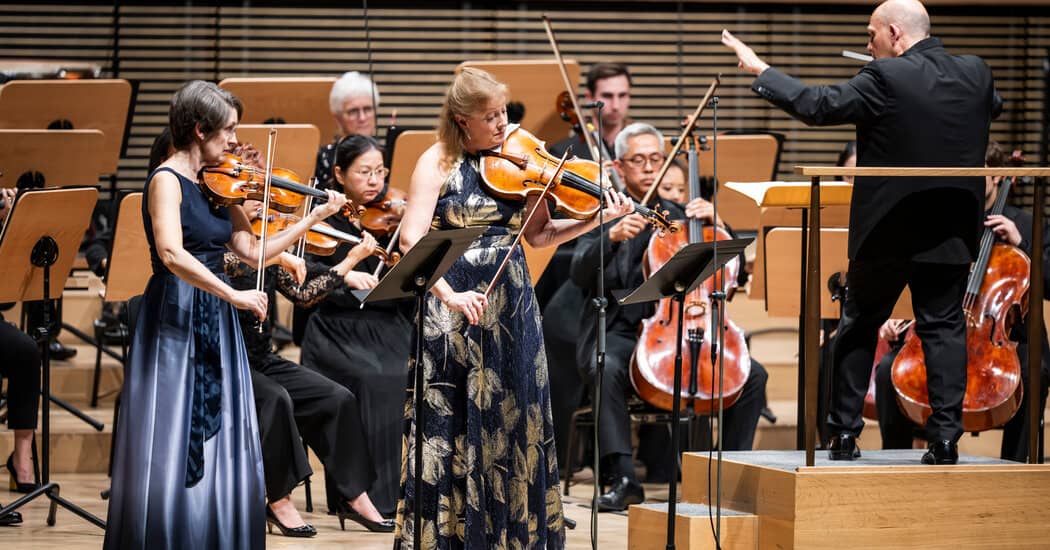It was heartening, though, to see a spotlight on the violist Cynthia Phelps in Mozart’s Sinfonia concertante in E flat, a double concerto that also showcased the violinist Sheryl Staples, always a welcome soloist. Violists don’t get enough love as it is, and Phelps was among the first, courageous players to perform with the roving NY Phil Bandwagon in pop-up concerts during the pandemic. (Another of those pioneering musicians, the violinist Fiona Simon, was honored on Thursday for her retirement, after 39 years with the Philharmonic.)
Phelps and Staples blended beautifully with each other, but less with the orchestra, in another symptom of van Zweden’s shortcomings with the Philharmonic. He has never managed to balance this orchestra’s forces, even in the generously clear acoustic of the renovated Geffen Hall. And, while it’s difficult to find a sweet spot in the Mozart that favors both the brightness of the violin and the subdued warmth of the viola, it’s not impossible. Brahms’s Double Concerto, later on the program, was similarly uneven, with the added trouble of mismatched soloists in the extroverted cellist Carter Brey and the less theatrical concertmaster, Frank Huang.
Much more suited to van Zweden, and the Philharmonic, was Shostakovich’s Concerto No. 1 in C minor for Piano, Trumpet and Strings, which drew from the orchestra in the trumpet soloist Christopher Martin but added some luxury casting in the pianist Igor Levit. Here, the whole ensemble had the visibly, exhilaratingly collaborative spirit and clarity of chamber playing, with the effects of lithely popping melodies and entertaining grotesqueries.
At the center of it all was Levit, who often appears capable of making the piano do whatever he wants. With clever pedal work and the kind of intuitive, in-the-moment style of a jazz player, he can, within the same passage, express puckish lightness and the devastating immensity of an avalanche, packing a symphonic range of colors into a single instrument.
There was another notable guest soloist a week earlier: the violist Antoine Tamestit, who was making his Philharmonic debut playing Sofia Gubaidulina’s Viola Concerto, another first for the orchestra. The concerto, from 1996, also made for a chillingly perceptive interpretation by van Zweden. After opening with a quickly escalating cadenza, Tamestit took on the character of a Charon-like guide through a desolate landscape, with no reprieve or escape in sight. Adding to the unsettled atmosphere was a quartet of principal string players who tuned their instruments a quarter-tone below the rest of the ensemble.
Gubaidulina’s concerto was paired, in a hint of salvation, with Mozart’s Requiem, which was followed with his brief motet “Ave Verum Corpus” as a coda. The Mass had talented soloists in the pure-voiced soprano Amanda Forsythe, the lush mezzo-soprano Cecelia Hall, the clarion tenor Nicholas Phan and the vibrato-happy bass-baritone Michael Sumuel; as a group, though, their sounds were too distinct to blend smoothly. Van Zweden, leading the Philharmonic with the excellent singers of Musica Sacra, slid back into old habit of blazing through a score, which robbed sections like the hellfire Dies Irae of their heft. In the end, the piece sounded less impressive than it has under guest conductors.
Before the concert, I had been hoping for a repeat of the “St. Matthew Passion.” But instead, this Requiem was representative of van Zweden’s tenure: There was no harm done, but also nothing approaching remarkable.




